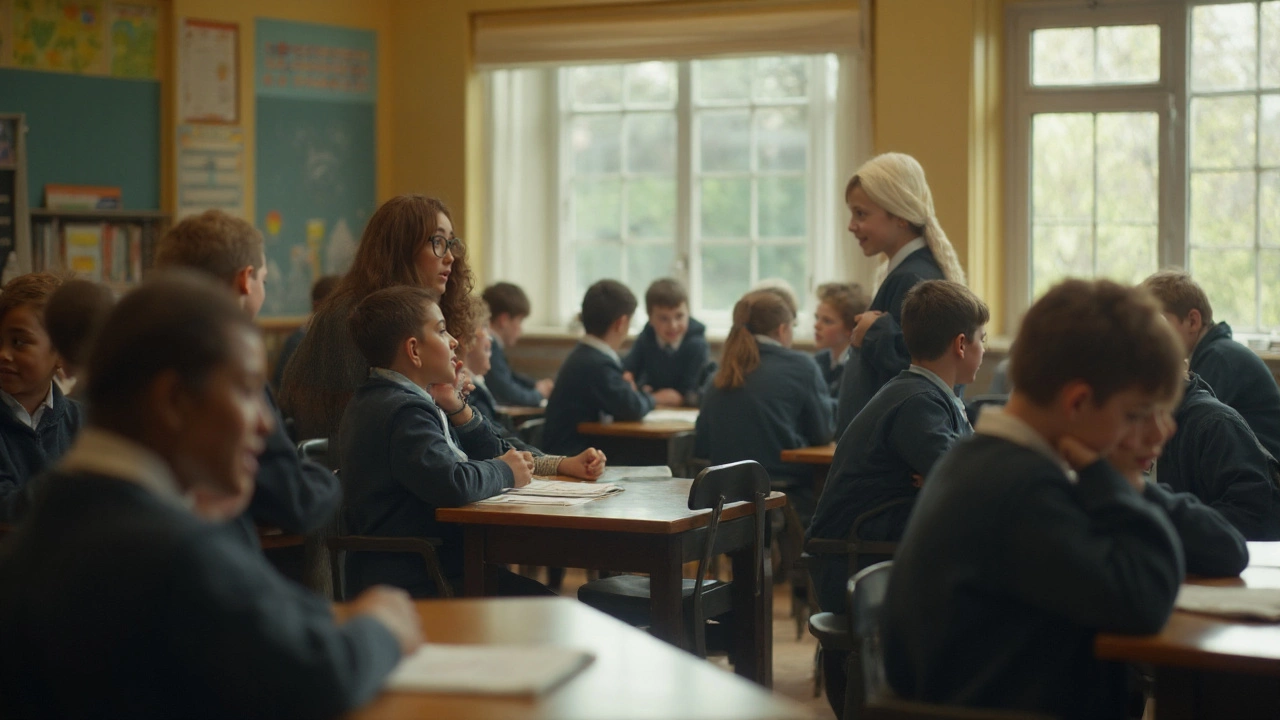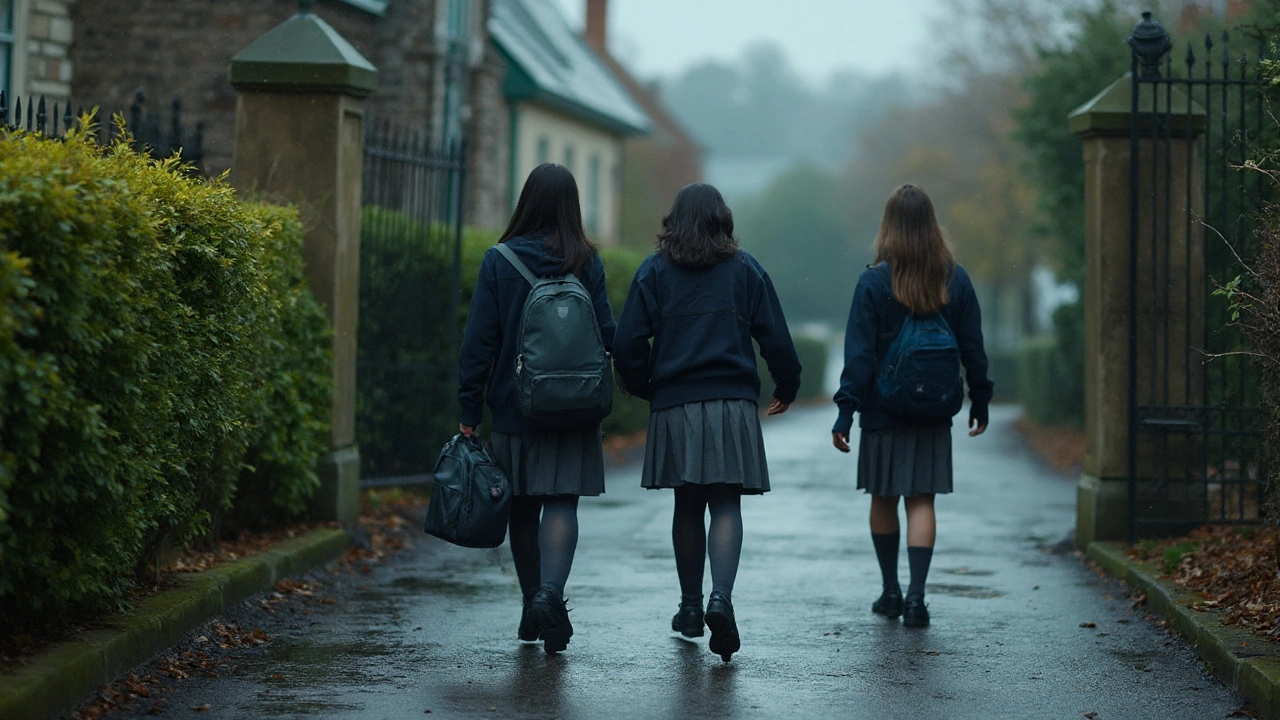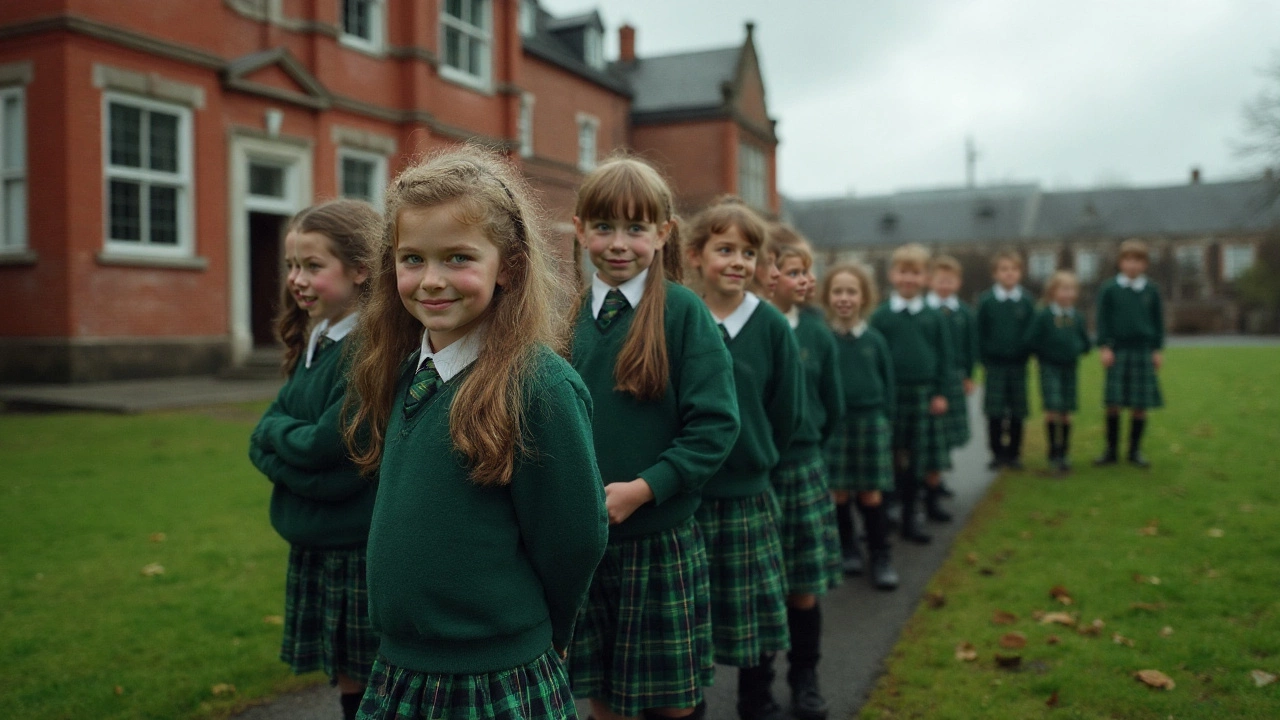Walk down any street in Galway or step onto the Luas in Dublin after 3pm, and you’ll spot the sea of matching jumpers, skirts, and blazers. School uniforms are stitched into the fabric of Irish life, almost as iconic as the Claddagh ring or tea with the neighbours. But behind the matching threads lies the big question parents, teachers, and students have wrestled with for generations: do school uniforms in Ireland really prevent bullying? Ask five people, you’ll get five answers. But there’s more to it than “sure, it’s just tradition.” The school uniform debate here isn’t just about fashion or discipline — it’s about feeling safe in a world where differences can make you a target.
The Uniform Landscape in Irish Schools
Irish schools take their uniforms seriously. From Kerry to Donegal, most primary and secondary schools expect some variation on the classic: navy V-neck jumper, white shirt, tie, and slacks or skirt. A few schools — especially in parts of Dublin or Cork — are relaxing the rules, bringing in gender-neutral options or letting students wear PE gear all day. But mostly, tradition holds strong. Irish brands like O’Neills and Marks & Spencer kit out thousands of kids each September. And come Communion and Confirmation season, finding the right shade of navy is as competitive as getting seats for the All-Ireland Final.
Much of the thinking behind uniforms is rooted in equality. If everyone’s wearing the same, how can anyone get picked on for their clothes? Sounds grand in theory. In fact, “reducing visible differences” crops up a lot when you hear school boards or parents’ associations discussing uniforms. The Department of Education even mentions it as a benefit. But as any 15-year-old will tell you, teenagers have a sixth sense for zeroing in on the tiniest things that make someone different — from shoes to accent to where your lunch comes from.
Does Uniformity Reduce Bullying?
Here’s where things get a bit sticky. Studies in Ireland, like the 2022 Dublin City University survey of 3,000 post-primary students, found uniforms can help reduce certain kinds of bullying — say, the type where someone’s picked on for not wearing the “right” top brands. One girl from Kilkenny put it well: “It took the pressure off. No one could slag me for my Penneys hoodie if we all had the same school jumper.” Bullying based on visible wealth, or lack of it, seems to get dialled down, at least a little, when uniforms are enforced.
But does bullying disappear entirely the second everyone’s wearing navy wool? Not even close. The Irish Society for the Prevention of Cruelty to Children (ISPCC) released a statement back in 2023:
“While school uniforms may mask some social and economic differences, they do not address the root causes of bullying, which are often about power, exclusion, or culture within a school.”You’ll still see kids getting targeted because of their weight, accent, or how they tie their tie. For others, the cost of buying crested blazers — which can run up to €150 each from exclusive suppliers — makes them stand out in another way, putting new pressure on families who are just about getting by.
On the upside, some schools in Limerick and Waterford have experimented with swapping fancy crests for sew-on patches, letting parents buy cheaper high-street jumpers and save a few quid. Initiatives like the National Parent’s Council’s “Swap Shop” events every August have made a real dent in both bullying and uniform-related stress. So, while uniforms may not wipe out bullying with the clean sweep some promise, clever thinking can make things fairer for everyone.

The Irish Schoolyard: More Than What You Wear
Spend any time in an Irish schoolyard and you’ll quickly realize the battleground is about much more than clothes. Don’t believe anyone who says “bullying’s not a problem here” — you only have to look at surveys like the ISPCC’s 2024 report, which found one in four Irish students has felt bullied at least once in the last year. Sometimes, it’s about looks or sexuality. In other cases, it’s about being from “down the country” in a city school, or having a different surname.
Uniforms take away one excuse, but clever kids always find new targets. For instance, even standard black school shoes turn into status symbols when students compare Clarks versus Dunnes versions. And then there’s the phone issue: having the latest iPhone or a trusty old Nokia can drive as much teasing as what jumper you wear. Bullying is deeply social and cultural — the uniform might cover some surface-level stuff, but what goes on underneath still matters. Schools with the happiest, safest students tend to combine uniforms with strong anti-bullying policies, inclusion training, and trusted staff who listen. Gaelscoileanna — those Irish-language schools — are a great Irish example. Some have swapped strict uniform codes for more relaxed dress and focused on building positive school communities. The same goes for some Educate Together schools, famous for championing diversity and equality without rigid uniforms. It’s not the outfit; it’s the ethos.
Irish Traditions, New Solutions
Tradition dies hard in Ireland. Uniforms are tied up with ideas about respect, discipline, and even the memory of our own parents and grandparents. Yet change is happening. The rise of gender-neutral uniform policies — like those rolled out by schools in Wicklow and Sligo since 2023 — show Irish schools want to consider everyone. And let’s not forget about sustainability: parents across Cork and Dublin have pushed for recycled uniforms and second-hand sales, calling out the “back-to-school” costs that hit hard every August. O’Mahony’s Bookshop in Limerick now runs a uniform exchange, which helps level the playing field for families and quietly chips away at bullying linked to who can afford what.
Diversity in Ireland has grown massively in the last decade. According to the 2022 Census, over 15% of Irish students were born outside the country or have at least one parent from abroad. For these kids, blending in matters — and uniforms can offer a degree of safety. But that only works if schools are also tackling racism, supporting language learners, and training teachers to spot bullying in subtle forms, not just ‘who wore what’. Parents, too, are getting savvier, setting up WhatsApp groups to swap tips, swap uniforms, and share warnings about any nastiness going on at school. If you’ve never heard two Irish mammies compare blazer prices or pool resources, you’re missing out on the real anti-bullying network.

Tips for Irish Parents and Students
Navigating Irish schools — and their uniforms — isn’t about finding one magic fix. It’s about staying involved and speaking up. Here are a few tips for parents and students dealing with uniforms and bullying in Ireland:
- Get informed: Check the school’s anti-bullying policy. Every Irish school must have one, and it’s worth reading so you know what’s enforced and what’s ignored.
- Uniform shopping: Look for affordable suppliers. Try Dunnes Stores and heat your ear for January sales at local uniform shops. Don’t assume you need the top brands. Second-hand is smart — many PTAs do uniform swaps every summer.
- Keep talking: Don’t just quiz your kids about homework. Ask about school life, who they’re hanging out with, what the atmosphere is like, whether anyone’s being left out or teased. The signs are rarely obvious.
- If your child is bullied: The first port of call is usually their form teacher or year head. Most Irish schools are getting better at listening, especially if you’re calm, clear, and persistent.
- Challenge traditions respectfully: If the school’s uniform policy feels unfair or puts real strain on your family, gather other parents, chat with the principal, and suggest alternatives. Schools do change — slowly, but especially when communities push together.
- Look for allies: The National Parents Council, ISPCC, and Barnardos Ireland all offer advice and sometimes even mediation if bullying issues spiral.
- For students: If you’re seeing bullying, speak up — even anonymously. Many Irish secondary schools now offer quiet ways to report bullying, with boxes in hallways or email hotlines.
To borrow a bit of Irish wisdom, “Ní neart go cur le chéile” — there’s strength in coming together. Uniforms can do a bit of the heavy lifting, but it’s the spirit in the school that really keeps bullying at bay. As Irish schools keep changing with the times, there’s hope that one day the only thing kids will argue about is who’s sitting closest to the heater on a cold Mayo morning.
